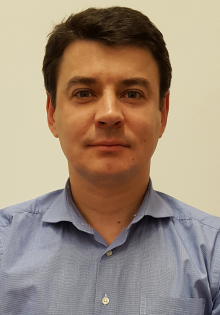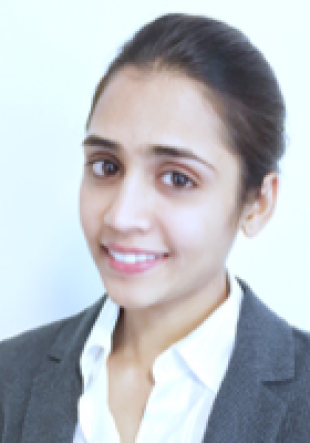Fields and Waves (L.048.90101), summer semester 2023
Usually taken by students of the Optoelectronics&Photonics Master and Electrical Systems Engineering Master (compulsory with "Electronics & Devices" focus) programs at the University of Paderborn in their first or second semester.
Sign up to the lecture and the exam (separately) on PAUL.
Topics
As described in more detail in the Module Handbook these topics are covered:
- Basics (Maxwell's equations, constitutive relations, continuity, energy),
- electrostatic fields and boundary value problems, plane waves (basics, reflection, Snell's law and Fresnel formulas),
- dispersion,
- modes in coaxial lines and hollow waveguides,
- radiation of waves
Prerequisites
To follow the course you should have a solid knowledge in the relevant mathematical basics (vector calculus: inner&outer product, div/rot/grad, Integral theorems of Gauss&Stokes; solutions of ODEs & PDEs) and in Field Theory (Electro- and Magnetostatics, Maxwell equations).
If you have a formal prerequisite in "Field Theory"/"Feldtheorie" mentioned in your acceptance letter, please see the FAQ page.
Lecture
Lecturer: Prof. Dr. J. Förstner and Dr. Viktor Myroshnychenko
Mondays 14:00-15:40, room P7.2.03
Since this is a compulsory course the date and time cannot be changed. If you have a schedule collision with another course please ask the other lecturer to move his/her course.
The combination of slides and handwritten lecture notes are uploaded to PANDA after each lecture as PDF.
Problem Sheets (Homeworks)
Published weekly on Monday morning in PANDA. Solutions can be submitted for correction after one week (into mailbox in front of room P 1.5.17.2, emptied Mondays 14:00, only in paper, no late submissions accepted) . The problems sheets are then discussed in the exercise.
Exercise groups (Tutorials)
Tuesdays 11:00-12:30, P1.5.01.4, Henna Farheen
Exam
The date of the exam : will be announced
By solving and submitting of the exercises additional bonus points (5%) can be obtained for the written exam (to be precise: bonuspoints_exam=5%*max_points_exam*reached_points_problemsheets/ max_points_problemsheets).
If you want to participate, make sure you are signed up in PAUL for the written exam ("Klausur").
You can bring one DIN A4 sheet of paper, handwritten on both sides with own notes to the exam. No copies or prints. Except for pens and rulers, no other tools (especially not calculators or phones) are permitted. The exam will be a mix of different questions (multiple choice, calculations, sketches, explanations, short derivations) on the topics of the lecture and the tutorial classes. If you did the problem sheets yourself and followed the lecture you should have no problem solving the questions.
Communication
For office hours and contact data please have a look at the website of the TET group.
Current information and circular mails are published via PANDA. If requested a forum and Wiki area will be created for communication also between students and additional material like lecture notes and problem sheets are uploaded. Everyone signed up in PAUL and having a koaLA account should be in the koaLA group automatically. To be added to the group manually, please send us your IMT login name.
We are always thankful for suggestions regarding the course.
Literature
- D.J. Griffith "Introduction to Electrodynamics" (Addison Wesley): Very systematic and good explanation of the concepts. Highly recommended for Electrostatics and Magnetostatics. Unfortunately the English version is quite expensive.
- Lecture notes by Prof. Schuhmann (now TU Berlin) - approach very close to this lecture. but concepts not explained in detail.
- J.D. Jackson "Classical Electrodynamics" - THE standard textbook. Every aspect is intensively and precisely discussed on a quite level, sometimes missing plenty steps in derivations. Excellent, but not really suitable for beginners (maybe as a reference book).
- Note that there are plenty good introductory textbooks about the theory of classical electrodynamics. If you already own one, it probably is enough as additional literature for the lecture).
Further literature will be mentioned in the lecture and exercises.



